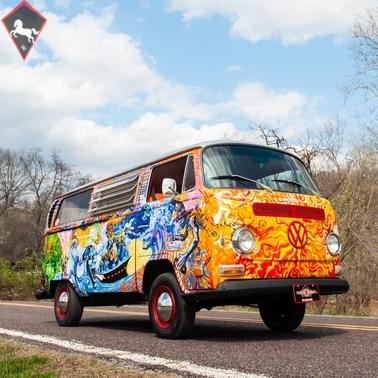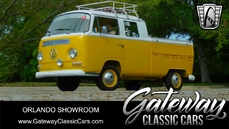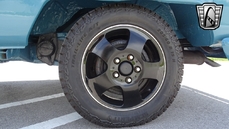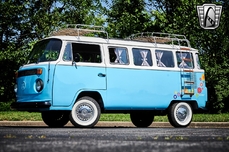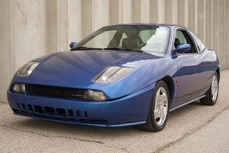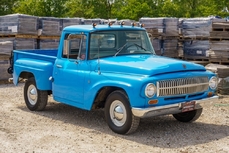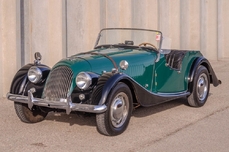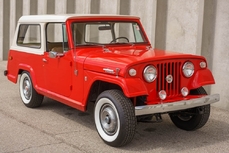Volkswagen Typ 2 (post 1967) 1.6L Four-cylinder 1971
Allmän beskrivning :
1971 Volkswagen Bus
Early work by Jason McCarty, an Iowa artist who died in the “Ghost Ship” warehouse fire in Oakland, CA in December 2016
Every vertical exterior surface has been transformed into a work of art; roof is silver
Autographed by the artist
Custom interior
1.6L flat four-cylinder engine
Four-speed manual transmission
12-volt electrical system
Power brakes
Documentation includes photos of Jason creating his art, photos of the completed work, high school photos of the artist and Iowa newspaper articles about the fire
On December 16, 2016, a fire started in a warehouse located off of Fruitvale Avenue in Oakland, California. Now known as the “Ghost Ship” Fire, unfortunately 36 people died in the blaze. Artist Jason McCarty was one of them. This VW Bus represents one of his early works completed before he moved to California and it is autographed by McCarty. It was originally a blank red canvas.
An Iowa native, he created art from a very early age. McCarty, 36, dabbled in a variety of media – illustrations, design, photography, painting and music. He moved to California in approximately 2006, when he began his master’s coursework at the San Francisco Art Institute.
The van’s nose is a mélange of warm hues in sun-like pattern. Moving around to the driver’s side, the yellows and oranges become part of a fire-breathing dragon’s exhalations. Past the driver’s door the dragon’s body undulates and a possible underwater scene hovers above the dragon’s back. Over the left rear wheel is a hippie panorama, complete with rainbow, peace signs and other traditional symbols. A large green frog occupies the driver’s D-pillar. Arcing across the rear is an emotive set of sun and moon phases, complete with a long red-and-white stocking cap on the moon. The passenger D-pillar bears a character who would look at home in J.R.R. Tolkien’s “Lord of the Rings” trilogy. Down the passenger side is a very mystical and psychedelic scene, with mushrooms, a Willy Wonka-like character and other images of which Tom Petty would have enjoyed.
The paint and trim are in overall very good order, as are its glass panels and lights. The van’s bodywork is straight while its cargo area is in very good order, however the heater boxes for the engine are missing. The black bumpers are in very good order. The van rolls on Douglas radials, size 185/75R14 at all four corners. The tires are in decent condition and each one surrounds a steel wheel topped with a vented factory wheel cover.
Inside, the newer shag carpet and upholstery are eye-catching. The seats are in excellent order while the matching shag carpet is in very good condition. The headliner is satisfactory, as is the two-spoke steering wheel. The black instrument panel and inner door panels are in very good condition. The fuel gauge is inoperable. Rounding out the interior is a Sony AM/FM stereo. The side entry door has been ingeniously transformed from a slider to a hinged “suicide” door, making it very unique.
In late 1967, the second generation of the Volkswagen Type 2 (T2) was introduced. It was built in Germany until 1979. Models before 1971 are often called the T2a (or “Early Bay.”)
This second-generation Type 2 lost its distinctive split front windshield and was slightly larger and considerably heavier than its predecessor. Its common nicknames are Bread loaf and Bay-window, or Loaf and Bay for short. At 1.6 L, the new engine with dual intake ports on each cylinder head was also slightly larger. The battery and electrical system was upgraded to 12 volts, making it incompatible with electric accessories from the previous generation. The new model also did away with the swing axle rear suspension and transfer boxes previously used to raise ride height. Instead, half-shaft axles fitted with constant velocity joints raised ride height without the wild changes in camber of the Beetle-based swing axle suspension. The updated Bus transaxle is usually sought after by off-road racers using air-cooled Volkswagen components.
The first models featured rounded bumpers incorporating a step for use when the door was open (replaced by indented bumpers without steps on later models), front doors that opened to 90° from the body, no lip on the front guards, unique engine hatches and crescent air intakes in the D-pillars. An important change came with the introduction of front disc brakes and new roadwheels with brake ventilation holes and flatter hubcaps. Up until 1972, front indicators are set low on the nose rather than high on either side of the fresh air grille – giving rise to their being nicknamed “Low Lights.”
Competition to this Volkswagen in 1971 included Chevrolet’s G-Series Van, Dodge’s B-100, Ford’s Econoline, GMC’s VanDura.
Documentation includes photos of Jason creating his art, photos of the completed work, high school photos of the artist and Iowa newspaper articles about the fire.
This is more than a typical Volkswagen Bus, this is an artist’s rolling mural from a segment of his life. If you are interested in this unique VW, please stop by MotoeXotica Classic Cars as soon as possible.
PLEASE CLICK HERE TO VIEW OUR YOU TUBE VIDEO!
OR COPY AND PASTE THE LINK BELOW INTO YOUR WEB BROWSER:
https://youtu.be/0CE2y5r6hik
This car is currently located at our facility in St. Louis, Missouri. Current mileage on the odometer shows 62,881 miles. It is sold as is, where is, on a clean and clear, mileage exempt title. GET OUT AND DRIVE!!!
VIN: 2312043507
https://www.motoexotica.com/inventory/listing/1971-volkswagen-bus/
1971 Volkswagen Typ 2 (post 1967) 1.6L Four-cylinder is listed såld on ClassicDigest in Fenton (St. Louis) by for $26900.
Fakta i bilen
Karosstyp : Personbil Märke : Volkswagen Modell : Typ 2 (post 1967) Modellversion : 1.6L Four-cylinder Motorvolym : 1.6 Årsmodell : 1971 Karosstyp : Van Läge : Fenton (St. Louis)
Såld
Information om säljaren
Såld
People who viewed this Volkswagen Typ 2 (post 1967) also viewed similar Volkswagen listed at ClassicDigest
Other cars listed for sale by this dealer
om Volkswagen
Volkswagen-berättelsen är verkligen en spännande berättelse om innovation, motståndskraft och efterkrigstidens väckelse, präglat av olika modeller som har blivit ikoniska i bilhistoria.People's Car (Volkswagen): Ursprungligen föreställt av Adolf Hitler på 1930 -talet som en "folks bil" eller "Volkswagen" på tyska, var tanken att skapa ett prisvärt och praktiskt fordon för det tyska. Detta koncept ledde till utvecklingen av Volkswagen Beetle (eller typ 1), designad av Ferdinand Porsche.
Efterkrigstidens utmaningar: Efter andra världskriget mötte Volkswagen betydande utmaningar. Fabriken skadades kraftigt, och varumärkets förening med den nazistiska regimen ledde till brist på intresse i bilen i vissa regioner.
Brittisk intervention - Den brittiska armén & Ivan Hirst: Den brittiska armén tog kontrollen över fabriken under den omedelbara efterkrigstiden. Major Ivan Hirst, en brittisk arméoffiser, spelade en avgörande roll för att återuppliva Volkswagen. Han erkände potentialen i skalbaggen och förespråkade för dess produktion och övertygade den brittiska militären att beställa flera tusen bilar. Detta beslut hjälpte till att starta varumärkets väckelse.
Exportframgång och Beetle's Global Appeal: The Beetle fick popularitet inte bara i Tyskland utan också globalt och blev en ikon för prisvärd bil. Dess enkla, pålitliga design och unika utseende gjorde det till en favorit bland konsumenterna över hela världen.
Modell Evolution: Under åren introducerade Volkswagen olika modeller tillsammans med skalbaggen, var och en bidrog till varumärkets tillväxt:
Typ 2 (VW -buss eller transportör): Introducerad på 1950 -talet blev det en ikonisk symbol för hippie -rörelsen på 1960 -talet, älskad för sin rymlighet och mångsidighet.
Golf (kanin i USA): Lanserat i mitten av 1970-talet markerade golfen (eller kaninen i USA) en förskjutning mot framhjulsdrivna, moderna design och hatchback-praktik och blev en hörnsten i varumärkets framgång.
Passat, Jetta och andra modeller: Volkswagen utvidgade sin sortiment med modeller som Passat och Jetta, som catering till olika marknadssegment.
Utmaningar och innovationer: Trots framgång mötte Volkswagen utmaningar, inklusive kvalitetsfrågor på 1970 -talet. Varumärket fortsatte dock att förnya och utveckla nya modeller och tekniker.
Rise of the GTI och Global Expansion: 1980-talet såg ökningen av den ikoniska Golf GTI, en högpresterande version som ledde till den heta lucktrenden. Volkswagen utökade också sin globala närvaro under denna period.
Det brittiska ingripandet i att återuppliva Volkswagen efter andra världskriget spelade en viktig roll i varumärkets återupplivning. Även om det kan ha varit några spänningar eller konkurrens mellan bilföretag på 1950- och 1960-talet på grund av Volkswagens framgång efter kriget, stärkte varumärkets förmåga att producera innovativa och populära modeller sin plats i bilhistoria.
